Derek Reads Alan Moore’s Swamp Thing for the First Time
In my continuing effort to cover many of the classic comic runs, this spring, after much reluctance, I went to my public library and took out the first few trades of Alan Moore’s Swamp Thing, published by DC comics in the early 1980s and marking the beginning of the British Invasion of comics (which I discussed in a previous post here).
I’ve talked about Alan Moore’s work a few times, like when I recently read Halo Jones for the first time, and when I mused about what a Watchmen-like look at the planetary romance genre might look like, in four parts I, II, III, IV.
I’ve also talked a bit about horror comics of the 1970s, when I looked at Marvel’s Son-of-Satan, and also this spring, I was reading Marvel’s Tomb of Dracula for the first time. I’m not going to blog about Tomb of Dracula, but Black Gate‘s William Patrick Maynard did a 13 part (!) series on it, starting here.
Part of my reluctance in starting Swamp Thing was partly because I was a superhero guy, and second of all, I wasn’t really sure what kind of story might be in the offering with a swamp monster. And once in a hotel in Cuba, with nothing else to do, and with nothing else on, I watched about 15 minutes of the Swamp Thing movie, which (a) didn’t impress me and (b) was based on pre-Moore material anyway.
[Click the images for Swamp-sized versions.]
But strong recommendations from friends and industry pros on podcasts convinced me to try it, and boy am I happy I did. Some 45-year old and 35-year old spoilers may follow, so proceed with caution…
For those of you like me, who knew nothing about Swamp Thing, he was created by Len Wein and Berni Wrightson in the early 1970s and he very quickly got his own series.
Briefly, Alec Holland was blown up along with his super-plant formula and his corpse sank into the swamp. There, the swamp life mixed with the super-science formula to revive Alec Holland, but with the only materials at hand, like mud and weeds and rotting branches and stuff.
So the series is about a man turned into a monster, trying to regain his humanity and trying to bring to justice those who caused this. In this sense, Swamp Thing is a somewhat standard monster story, which plays on our emotions with the humanity inside the monster, the body horror of being trapped inside of something grotesque, and of the physical redemption arc of seeking back a physical humanity as well. I can see why this worked and much of the first series’ momentum in the 1970s can also be credited to Wrightson’s brilliant artwork.
Alan Moore was hired by Len Wein to take over Swamp Thing volume two at issue #20, presumably with a carte blanche, and the art team of Stephen Bissette, John Totleben and Tatjana Woods.
It is fascinating to see Alan Moore as a relatively new writer make full use of that carte blanche. In almost meta-hilariousness, Moore cuts off the previous storyline in a hail of bullets that would have made the Baptismal scene in The Godfather envious. And he appropriately calls this issue “Loose Ends.” Most of Swamp Thing’s supporting cast is either displaced or killed and most surprisingly, Swamp Thing himself is killed. No more loose ends.
Moore brilliant series thesis is revealed in issue #21, called “Anatomy Lesson.” This issue is the story of a powerful industrialist called Sutherland and the convict-scientist Woodrue, who is not a real human, but is the Fluoronic Man, disguised as a human. Woodrue has been sprung from prison to do an autopsy on the Swamp Thing. This is a mystery of the how-dun-it kind: how did a plant formula turn Alec Holland into a plant-based swamp creature?
The mystery deepens with a mood of body horror laid over Woodrue who is obviously nuts in the Smeagol-Gollum sort of way, and Sutherland who is mechanically evil. And the violent, horrific imagery of the autopsy, matched with flashbacks of the violence of Swamp Thing’s creation and death, get increasingly disturbing until Woodrue/Fluoronic Man makes his discovery.
Swamp Thing is not a man trapped in a plant body, trying to return to his humanity. Swamp Thing is a plant that accidentally absorbed the memories of a man, and has wasted years trying to recover a humanity it never possessed. Matt Draper did a fascinating 13 minute talk analyzing the series shift from body horror to existential horror. Check it out.
And, worse for Sutherland, Swamp Thing is not actually dead. A plant thing cannot be killed by bullets, just injured. And as the Swamp Thing slowly thaws, and sprouts, Woodrue leaves his notes and conclusions where Swamp Thing will find them.
Swamp Thing kills Sutherland, but then is left with the terrible agony of this existential horror of his entire existence, all his efforts and links to humanity being just lies. He was living with the memories of someone he never was, someone who has been dead for years.
Moore never slows down from there. The first arc is about Swamp Thing coming to terms with what he is and the terrible raw philosophical and existential choices before him, while simultaneously facing other, evil, destructive monsters that serve to some extent as foils to his choices.
His supporting cast gradually comes back, especially Abby, and a strange (very strange) gothic horror romance blooms in the subsequent arcs as Moore expands the Swamp Thing mythos, including providing him with a larger and more meaningful origin.
One of the reasons I mentioned Tomb of Dracula above is because I think the simultaneous reading helped me understand something more of the monster story form. One of the things that struck me in Swamp Thing was how little panel-time he actually got. His supporting cast and the other monsters often occupied a half to two thirds of the book.
This was strange until I remembered that Marvel’s Carnage series by Gerry Conway and Mike Perkins, had a similar structure. As much time, or more was devoted to the people chasing Carnage and the monsters trying to control him, as to Carnage himself.
And when I looked at Marvel’s 1972 Tomb of Dracula by (coincidentally enough) Gerry Conway and Gene Colan, the same formula seemed to apply: the vampire hunters take up about half the book.
These comparisons helped situate me into the way a monster story works, and showed me what new things Alan Moore brought to the table, and which parts of the monster genre he held onto because he needed to.
I’m really glad I read Alan Moore’s Swamp Thing. I’m going to have to read it a few times for fun and learning, so I’m adding to my list of things I need to buy at my LCS. Strongly recommended. I’ll try to be back with more classic runs I get to soon, but WorldCon is first, then NYCC!
Derek Künsken writes science fiction and fantasy in Gatineau, Québec. His short fiction has been selected for several Year’s Best anthologies, including those by Horton, Datlow and Dozois, and he won the Asimov’s Award in 2013. His first novel, The Quantum Magician, a hard SF heist story 500 years in the future, is now available for pre-order here.
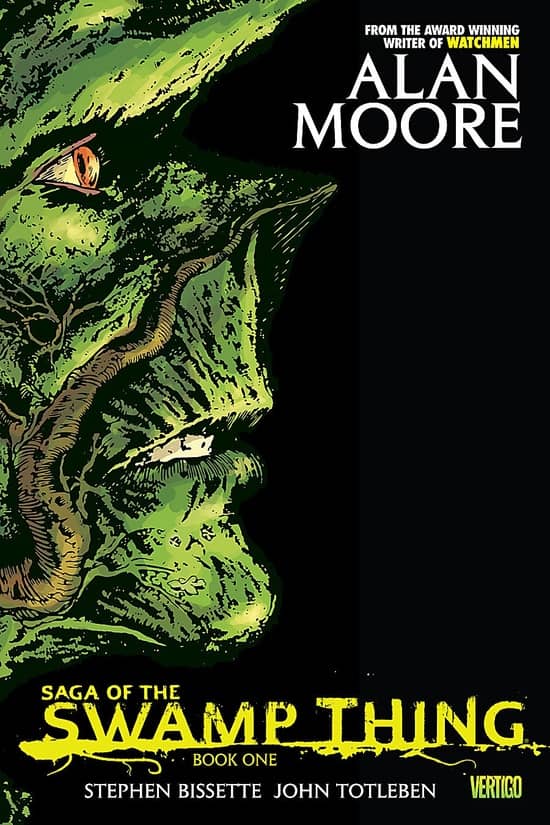
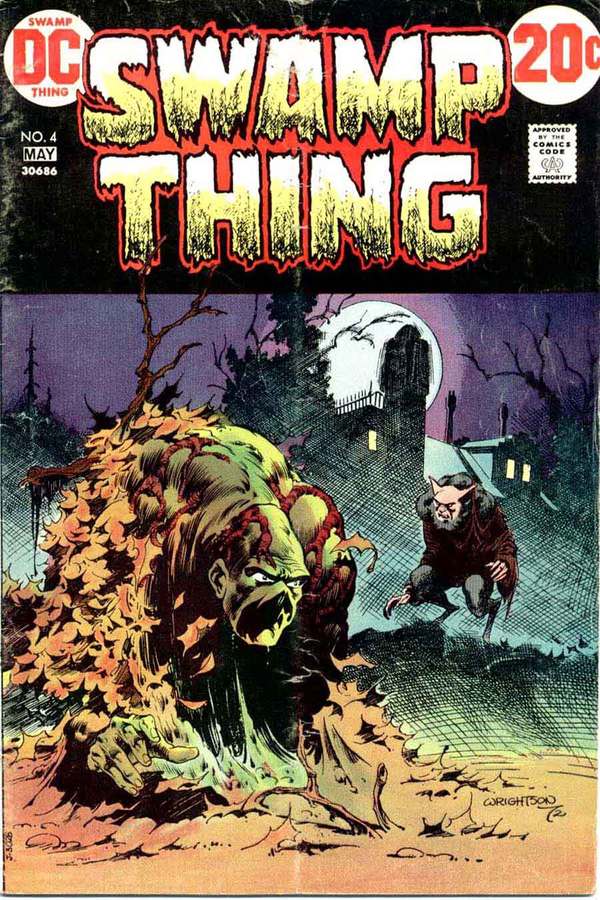
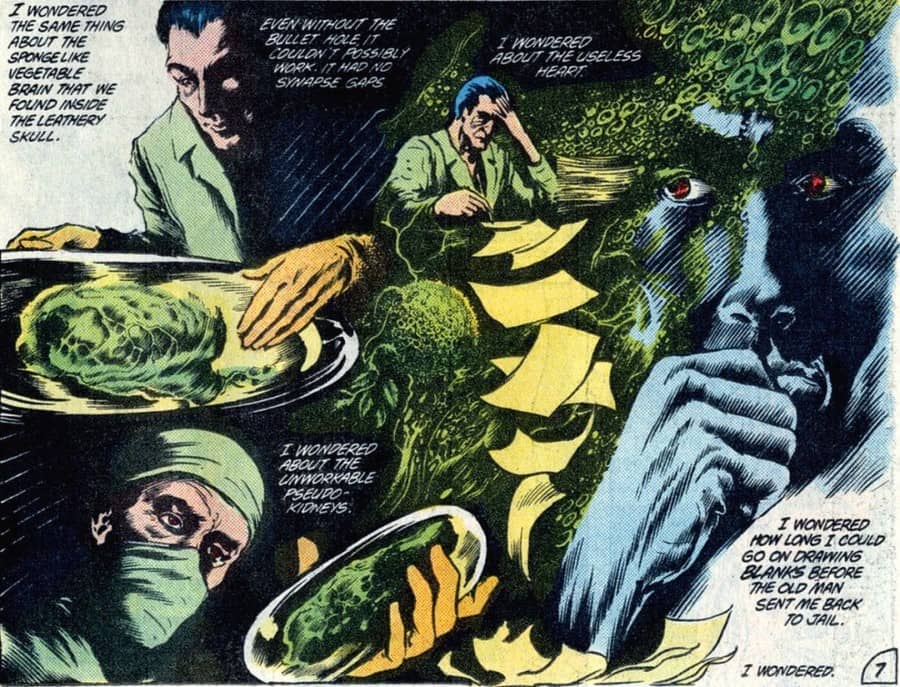
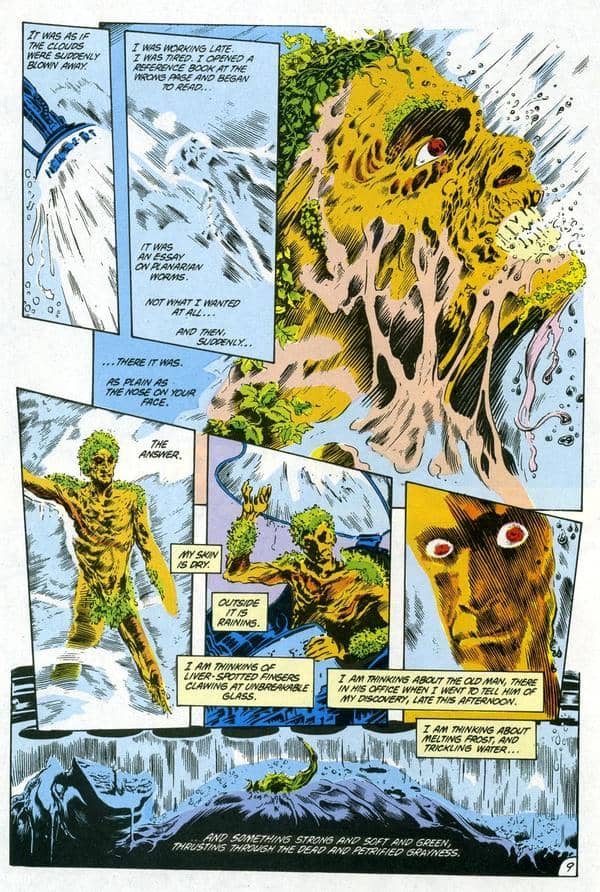
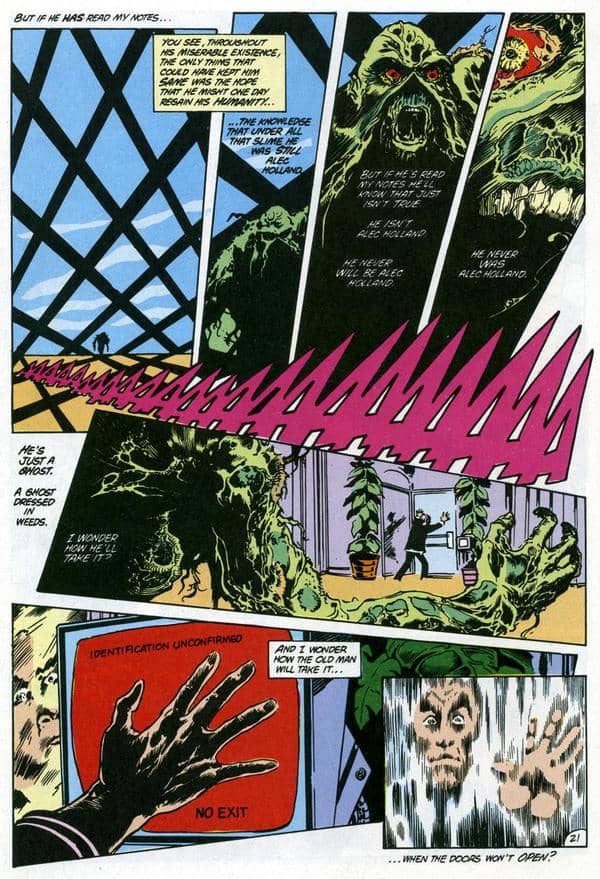
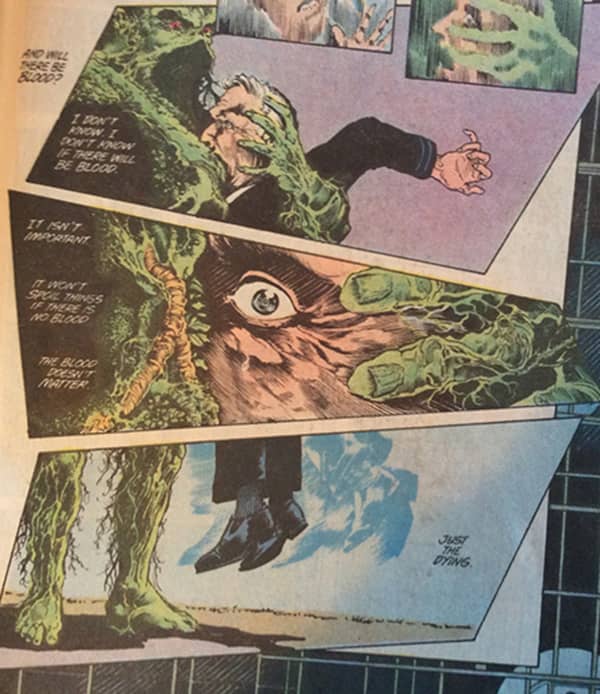
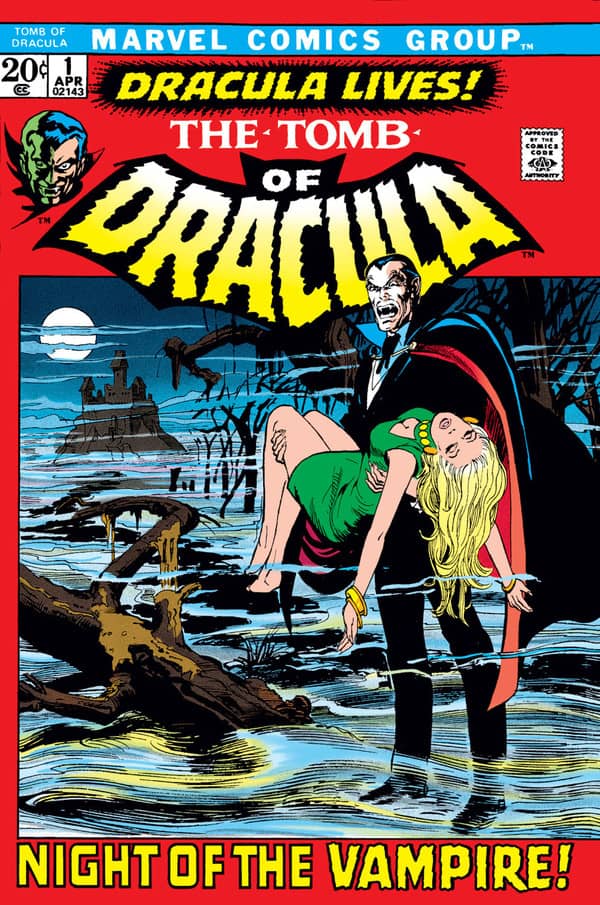
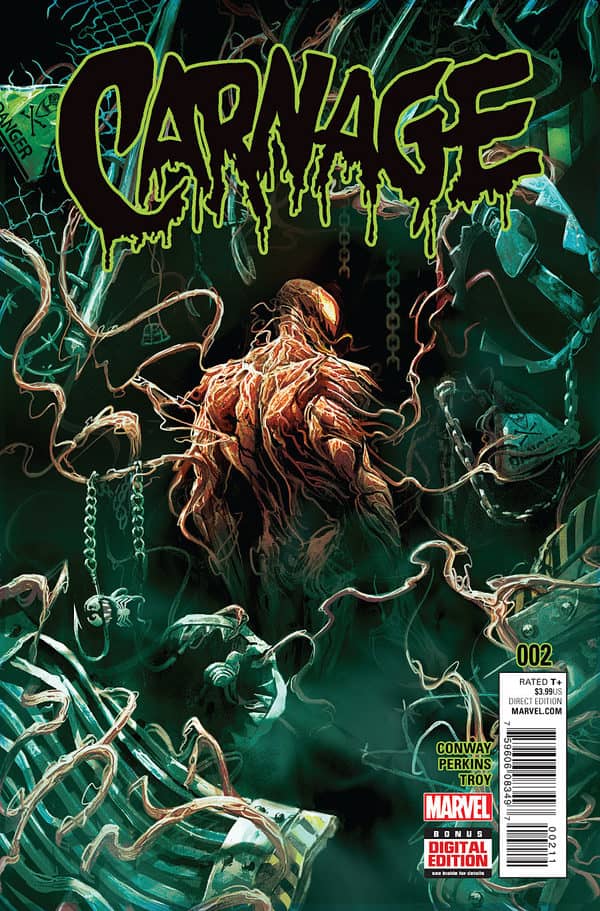
The Anatomy Lesson is the turning point in Swamp Thing’s career no doubt. It was heads above most of the titles being published back then. Only thing Mr. Moore did that would bring out the fan rage in me was a two part adventure with Adam Strange where he did a number on how the Rannians REALLY felt about Adam being there.
Tomb of Dracula-another series that can read and reread. Highlight for me was the three parter involving Shelia Whittier-after all these years I can still remember her name and that final page.
I have wondered just a bit if the return o Alec Holland recently in the revived Swamp Thing is a homage to Len Wein or a distancing from Moore over the Watchmen situation. I have NOT bothered with it unless it crosses over with series I collect like Justice League Dark where I greatly want a Phantom Stranger storyline.
Moore’s great talent when working with other people’s long-established characters is his ability to transform without deforming. (A talent NOT possessed by Frank Miller, btw.) Moore’s “Whatever Happened to the Man of Tomorrow”, the final Superman story of the original continuity, can still bring tears to my eyes…
> Moore’s “Whatever Happened to the Man of Tomorrow”, the final Superman story of the original continuity, can still bring tears to my eyes…
Thomas,
Agree absolutely. That single 2-issue story made me yearn for a golden age Superman series scripted by Alan Moore. How much better might that have been, than the John Byrne MAN OF STEEL the world got instead?
Wow! I kind of envy you, discovering some of Alan Moore’s early best for the first time.
The sad thing is – buying them new you support industry exploitation of a creator. Mr. Moore really put his heart and soul into this – according to him he was under an agreement that he’d eventually own the Swamp Thing – once DC stopped publishing them. That’s also why the graphic novels have never gone out of print… Also what absoloutely killed the deal on him not doing anything with the “Watchmen” pre-quels, some excec made the SAME promise to him… Heh, he’s smart enough to keep it at “Fool me once…”
Having said that, to anyone interested, thanks to DC over-printing you can usually find them used pretty cheaply/on the shelves of the used bookstore so you can get a used copy without paying DC money.
This work is well worth obtaining. It is amazing and was at a trancedental level above what comics offered at the time. I read these when they were printed and -wow- even harder and harsher than Daredevil. I came into the series later, when Arcane escaped from Hell and ended up with high powers. Something a TPB reader will miss is a number of pages that foreshadowed the “Crisis on Infinite Earths” inserted here and there. Again to the “Ownership” question it’s obvious why DC cut them.
There was so much awesome cool before and after – underwater vampires – South American Shamans – but the episodes where Arcane returned from Hell – having unthinkable powers that seemed on the “Thanos” level but he made the mistake of underestimating the Swamp Thing – then the quest to find and free Abby’s soul – that really set the stage for years.
It’s also got some really neat gems and foreshadowing in the stories.
One story is a tribute to Walt Kelly/Pogo. Other ones have things used in later comics – Cain and Abel from House of Mystery/Secrets – even Abby’s Ex – Matthew Cable – comes back as Dream’s Raven in the “Sandman” series. Any younger reader jumping in here might go “Hey! I remember that character from…” especially if Sandman was their start once the superheroes bored them/gave them a too quick continuity shift headache. A lot of the foundations of Comics going kinda mainstream during the 90s Boom was laid here. Like the underground of decades past, the “British Invasion” of comics writing helped the push for comics to agressively expand from the niche they’d been forced into.
—Oh, I forgot where – but another hidden gem – One of the characters is a hippie – dealing with long term disillusionment of the 60s being over, but still trying to keep up spirits. Neat character. They had a brief scene in his room and among the stuff was (mostly obscured of course) some copies of “Freak Brothers” a famous underground comic.
Allard: I agree completely on the head-shoulders comment. In 1983, the X-Men were in their end-Cockrum or Paul Smith period, although probably the next best comparator of innovation in comics was Frank Miller’s Daredevil.
Thomas Parker and John O’Neill: OK. Now, I have to read Man of Tomorrow….
GreenGestalt: Yes! I’m loving all those different characters, but the blog post was already at 1200 words and I didn’t want to bore anyone any longer – lol…